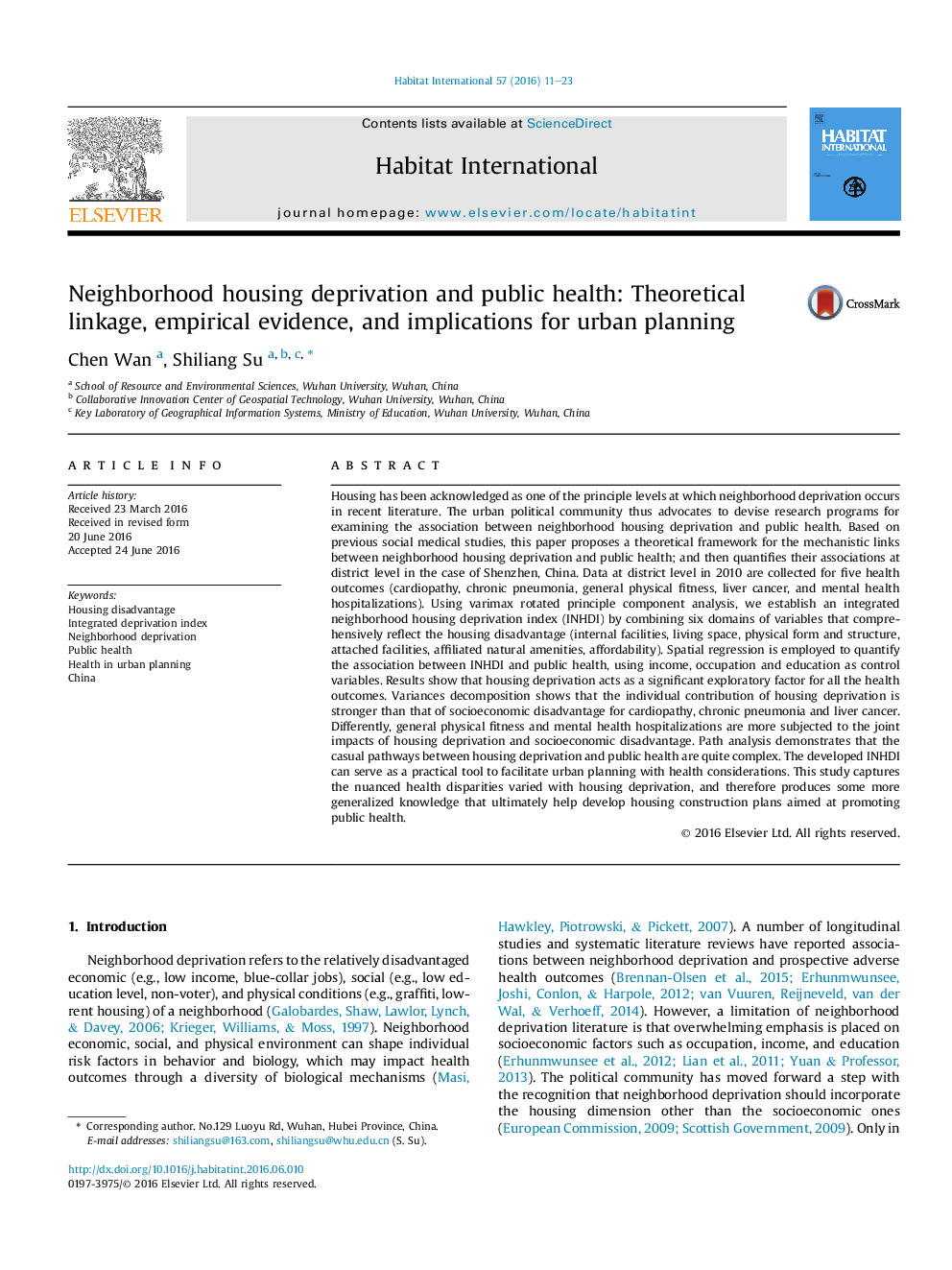| Article ID | Journal | Published Year | Pages | File Type |
|---|---|---|---|---|
| 1047631 | Habitat International | 2016 | 13 Pages |
Housing has been acknowledged as one of the principle levels at which neighborhood deprivation occurs in recent literature. The urban political community thus advocates to devise research programs for examining the association between neighborhood housing deprivation and public health. Based on previous social medical studies, this paper proposes a theoretical framework for the mechanistic links between neighborhood housing deprivation and public health; and then quantifies their associations at district level in the case of Shenzhen, China. Data at district level in 2010 are collected for five health outcomes (cardiopathy, chronic pneumonia, general physical fitness, liver cancer, and mental health hospitalizations). Using varimax rotated principle component analysis, we establish an integrated neighborhood housing deprivation index (INHDI) by combining six domains of variables that comprehensively reflect the housing disadvantage (internal facilities, living space, physical form and structure, attached facilities, affiliated natural amenities, affordability). Spatial regression is employed to quantify the association between INHDI and public health, using income, occupation and education as control variables. Results show that housing deprivation acts as a significant exploratory factor for all the health outcomes. Variances decomposition shows that the individual contribution of housing deprivation is stronger than that of socioeconomic disadvantage for cardiopathy, chronic pneumonia and liver cancer. Differently, general physical fitness and mental health hospitalizations are more subjected to the joint impacts of housing deprivation and socioeconomic disadvantage. Path analysis demonstrates that the casual pathways between housing deprivation and public health are quite complex. The developed INHDI can serve as a practical tool to facilitate urban planning with health considerations. This study captures the nuanced health disparities varied with housing deprivation, and therefore produces some more generalized knowledge that ultimately help develop housing construction plans aimed at promoting public health.
